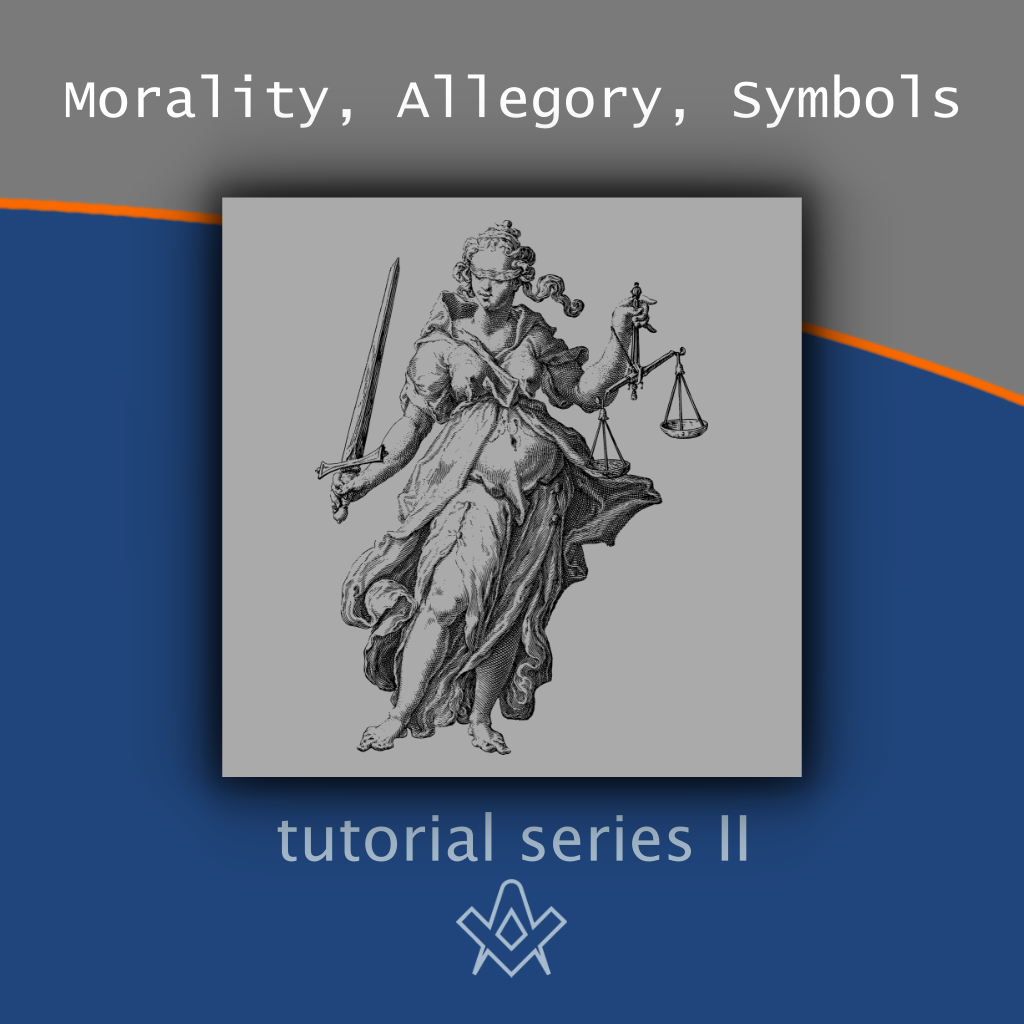“Morality veiled in allegory and illustrated by symbols”
A phrase that immediately comes to mind when describing Freemasonry – Morality veiled in allegory and illustrated by symbols. Let us have a look at what this phrase actually means.
Morality, according to the Cambridge Dictionary;
“is a set of personal or social standards for good or bad behaviour and character”.
Immorality is;
“Behaviour that is morally wrong, or outside society’s standards of what is acceptable”
Video Presentation of this article
So, what is acceptable behaviour?
Society is ever evolving and social standards change to reflect that cultural movement.
For example pre 1967 it was illegal to be a homosexual and as late as 1989 in Scotland, rape within marriage was not a criminal offence.
Therefore, is there a difference between personal morality and public law?
In the 1950s Lord Devlin, a leading judge, envisaged that law and morality are “fundamentally interconnected”, arguing that “the law had a right, in fact a duty, to uphold common morality”.
Herbert Hart, a leading academic at the time, disagreed arguing that law enforcing moral values was unnecessary.
He argued that law enforcing morality “infringes the liberty of the individual”.
Even today the Hart–Devlin debate continues over legislation regarding assisted suicide.
As Freemasons we do not have to go deep into the academic realms of law and social justice to understand what is good and bad behaviour or good and bad morals, for it is in our ritual.
However, Freemasonry being universally spread over the globe and embedded within various cultures with different social outlooks on life, what may be good behaviour or good morals in some communities may not be so good in others.
In Freemasonry a universal standard of morality is taught within our rituals and by the symbols within our Lodges.
Having been “restored to the blessings of material light” in the first degree ceremony our attention is drawn to the first of those visual symbols, the “three great emblematical lights”, the Volume of the Sacred Law, the Square, and the Compasses.
“The Sacred Writings govern our faith, the Square to regulate our actions and the Compasses to keep us in due bounds with all mankind.”
All are symbolic representations that give a Freemason his “strength” and his desire to be the best person he can be.
Volume of the Sacred Law (VSL)
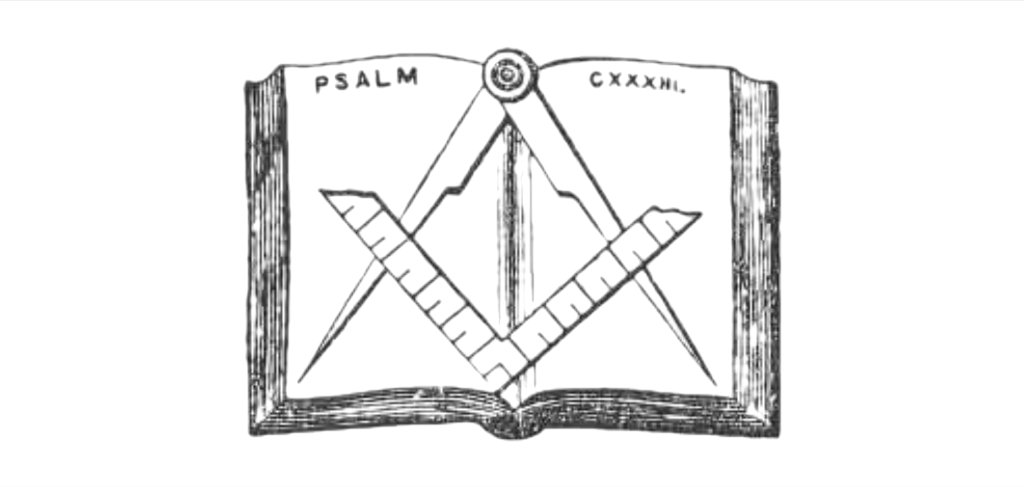
“The Sacred Writings govern our faith”.
It is our faith which is the guide to our morality. Within the Sacred Writings there is an answer to all the moral dilemmas that we may come across in our life.
For example, on the question of “diversity” the VSL of various faiths are unanimous in their answer.
“You shall love thy neighbour as yourself there is no other commandment greater than these”(Holy Bible, New Testament: Mark 12:31)
“O mankind, your Lord is One and your father is one. You all descended from Adam and Adam was created from earth. He is most honoured among you in the sight of God who is most upright. No Arab is superior to a non-Arab, no coloured person to a white person, or a white person to a coloured person except by Taqwa (piety)”
– Islam: Prophet Mohammad
[Editor’s Note: see the Five Pillars of Islam]
“Do unto others as you would have them do unto you” (The Jewish Torah: Leviticus 19:18)
“Do not believe you are above or below anyone. Keep a humble spirit” (Buddhism)
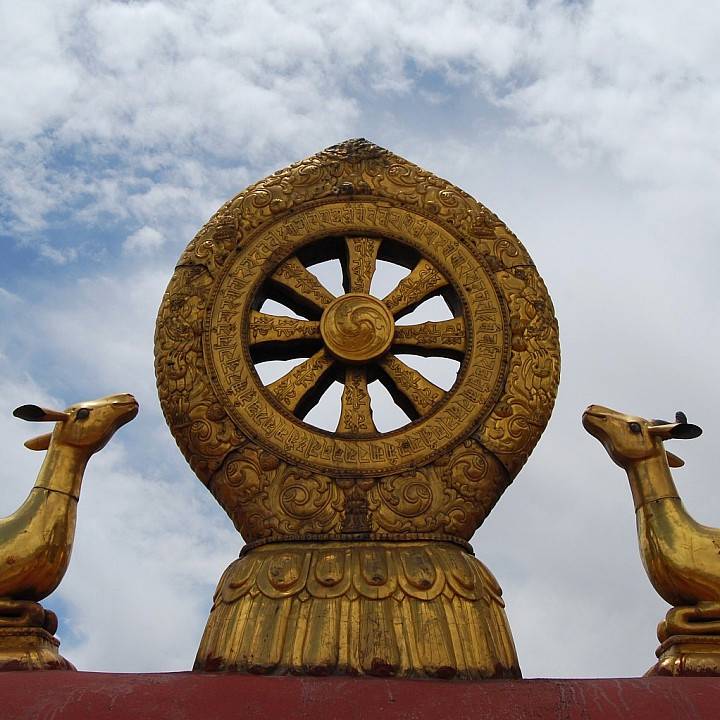
The eight spoke Dharma wheel symbolizes the Noble Eightfold Path – Credit: Chris Falter – Own work,
IMAGE LINKED: wikimedia Attribution 4.0 International (CC BY 4.0)
“The God-conscious being looks upon all alike, like the wind, which blows equally upon the king and the poor beggar” (Sikhism, Guru Granth Sahib 272)
For a Freemason, who by definition is moderate in his attitude, it is his “faith” which is his moral compass and that, brethren, is universal.
The Square

“The Ssquare Regulates our actions”.
A symbol that our actions or behaviour are dictated by our attitude. Our attitude is influenced by our faith and the teachings within the VSL. The teachings of morality and a way to live a virtuous life.

The Betari[s] Box theory – my attitude affects my behaviour, which affects your attitude and your behaviour.
The Compasses

“The Compasses Keep us in due bounds with all mankind”.
We are once again drawn to the Sacred Writings on how we treat our fellow man.
It is a wonderful reflection that all faiths teach the same with regard to the diversity of man. In fact all faiths teach their followers to live a virtuous life.
It is important that Freemasons are in touch with the ever evolving values of our cultures and communities.
For if we do not, Freemasonry becomes irrelevant. But, most importantly, we must adhere to and promote those great Masonic values of “Brotherly Love, Relief and Truth” or in more modern [UGLE] terms, “Integrity, Respect, Friendship and Charity”.
“It is not the most intelligent of the species that survive; it is not the strongest that survive; but the species that survives is the one that is able to best adapt and adjust to the changing environment in which it finds itself.”
– Darwin: Origin of the Species
When we look at morality we reflect upon who we are as Freemasons.
Our behaviour both in and outside of the Lodge room which is influenced by those three “great emblematical lights”.
Society may change in its attitude to various moral concepts, which it should as humankind evolves, but a Freemason’s guide to morality lies in the symbolism of those three emblematical lights and the moral symbolism of each part of the Lodge furniture and working tools.
Everything within the Lodge room has a symbolic moral meaning.
It would take too long to identify and explain each piece of Lodge room furniture and its moral meaning in this short paper, but the next time you are in your Lodge room take time to look at each part of it and identify its moral relevance.
If you don’t know ask, a senior brother would be more than happy to explain.
Allegories

Allegory of true and false wisdom. Etching by J.G. Bergmüller
IMAGE LINKED: wellcome collection Attribution 4.0 International (CC BY 4.0)
The Cambridge Dictionary defines an allegory as;
“a story, play, poem, picture or other work in which the characters and events represent particular qualities or ideas that relate to morals, religion or politics”.
Each degree ceremony in Freemasonry has a moral story to tell.
It is a means of teaching morality in a way that involves the candidate.
In education (Benjamin Franklin) there is a phrase;
“Tell me and I forget, show me and I may remember, involve me and I will learn”.
It is not a new or revolutionary method of teaching for characters in the VSL told stories to highlight moral teachings.
Within the degree ceremonies a playlet is acted out and at the end of the play it is explained by a senior member of the lodge with the aid of the pictorial representation of the degree, the Tracing Board.
The Tracing Board is a pictorial explanation of the allegory of the degree and is a constant reminder of what has taken place.
When in lodge study the Tracing Boards as the repetition of doing so will remind you of the moral story of each of the degrees.
Freemasonry is not just the social aspect of meeting and socialising, although that is a very important part of it, it can be spiritually uplifting.
The more you understand the ritual and the symbolism the more interesting the whole experience becomes.
There is another educational phrase;
“if you want to learn about something at a deeper level, teach it”.
Do not be afraid to ask senior members of the Lodge questions if you do not understand.
They will be more than willing to share their knowledge with you and you, in turn, will be able to instruct others in the meaning of Freemasonry, thereby expanding the knowledge of the membership giving everyone the tools and the interest to be better people, for Freemasonry makes a good person better.
Footnotes
Resources
Open University (Society, Politics and Law)
The Holy Bible (New Testament) (Christian)
The Holy Bible, (The first five books of the Old Testament) the Torah (Judaism), The Holy Quran (Islam)
Teachings of Buddha (Buddhism)
Teachings of Guru Granth Sahib 272 (Sikhism)
The Origins of the Species (Darwin)
Cambridge Dictionary
The Ritual of the Lodge of Union No, 38. ( under English Constitution – UGLE)
Article by: Stephen J. Goulding
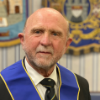
Stephen was initiated into Freemasonry in 1978 in Tylney Lodge No. 5856 (UGLE). He was Master in 1989 & 2004.
He was Master of the Lodge of Union 38 (UGLE) in 2018. He is also a PZ in the Holy Royal Arch and PM in the Mark Degree.
Stephen served 30 years in the Metropolitan Police Service (London, England) before going into education in 2000, where he became a college lecturer and a mentor for both the college and the University of Greenwich (London, England). Now retired, he teaches Tai Chi and Qigong in the community.
Facebook: Steve Goulding-Tai Chi West Sussex–Chi at Chi
Recent Articles: in this tutorial series
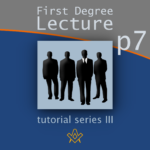 William Preston (1742 – 1818) gives his lectures in the form of a Catechism – questions and answers - and broken down into seven bite size chunks. This article is the first of the seven part series presented by Steve Goulding |
 William Preston (1742 – 1818) gives his lectures in the form of a Catechism – questions and answers - and broken down into seven bite size chunks. This article is the first of the seven part series presented by Steve Goulding |
 William Preston (1742 – 1818) gives his lectures in the form of a Catechism – questions and answers - and broken down into seven bite size chunks. This article is the first of the seven part series presented by Steve Goulding |
 William Preston (1742 – 1818) gives his lectures in the form of a Catechism – questions and answers - and broken down into seven bite size chunks. This article is the first of the seven part series presented by Steve Goulding |
 William Preston (1742 – 1818) gives his lectures in the form of a Catechism – questions and answers - and broken down into seven bite size chunks. This article is the first of the seven part series presented by Steve Goulding |
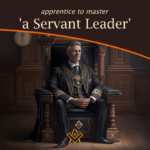 Apprentice to Master, “a Servant Leader”. Freemasonry is a learning platform used to improve a lifestyle which is morally, educationally and spiritually sound. To guide a person through life in order to be the best they can be. A Master, or ‘Servant Leader,’ develops those people in their care. They are someone who can guide others using the principles of Freemasonry - By Stephen J. Goulding |
 William Preston (1742 – 1818) gives his lectures in the form of a Catechism – questions and answers - and broken down into seven bite size chunks. This article is the second of the seven part series presented by Steve Goulding |
 William Preston (1742 – 1818) gives his lectures in the form of a Catechism – questions and answers - and broken down into seven bite size chunks. This article is the first of the seven part series presented by Steve Goulding |
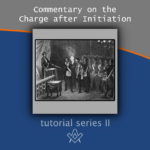 Commentary on the Third Degree Charge The Third Degree Charge invites the candidate to reflect on his life as both a ‘moral’ and ‘educated’ man, and to contemplate on what may be missing in his life. The ‘genuine secrets of a Master Mason’. |
 Commentary on the Second Degree Charge In the second degree we learn about being an educated man. Skilful, not only in the Craft itself but also how to communicate and manage others. This Commentary looks at the second degree charge in detail. |
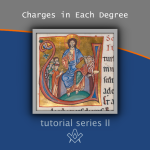 The ‘Old Charges’ have come down to us, containing the rules and regulations by which Lodges should be run and the moral and social standards to which each Lodge member should adhere. |
 Steps to the Making of a Master. The symbolism of each step of the winding staircase is to continue your personal development throughout your life, right up to your last breath in this world. |
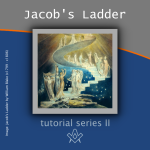 On the First Degree tracing board the most dominant feature is Jacob’s Ladder stretching from Earth to Heaven. Being straight, it is the shortest and quickest way to reach heaven, and being straight you can see the end goal. |
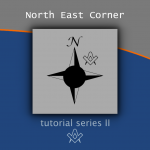 The North East Corner: A Lesson on Charity The ritual of the North East corner is a powerful piece of teaching. Let us examine that piece of ritual more closely; the lesson on charity. |
 When we look at the ritual book the deacons are told to ‘perambulate’ with the candidate. So what does this really mean? |
 The taking of a ‘Vow of Fidelity’. Oaths, Vows and Covenants |
 Morality veiled in allegory and illustrated by symbols A phrase that immediately comes to mind when describing Freemasonry – Morality veiled in allegory and illustrated by symbols. Let us have a look at what this phrase actually means. |
 Officers of the Royal Arch - The Principals The Principals' role in the Royal Arch, representing the pinnacle of spiritual leadership. Their esoteric significance lies in the unity of the three aspects of the divine, emphasizing the importance of harmony and balance in attaining spiritual enlightenment. The Principals embody the ultimate goal of the Royal Arch journey - the realization of divine wisdom. |
 Officers of the Royal Arch - Scribe Ezra Scribe Ezra is portrayed as a crucial figure within the Royal Arch, responsible for interpreting and teaching divine laws. The significance of his role lies in the pursuit of understanding and applying sacred knowledge, emphasizing the transformative power of wisdom when applied to one's life. |
 Officers of the Royal Arch - Scribe Nehemiah Scribe Nehemiah's responsibility within the Royal Arch, is that of preserving the sacred teachings. Scribe Nehemiah symbolizes the importance of maintaining accurate records and upholding the integrity of divine knowledge, thus reflecting the value of safeguarding spiritual wisdom for future generations. |
 Officers of the Royal Arch - The Sojourners The Sojourners, are seekers of truth, their journey symbolizes the spiritual path to enlightenment. Their role in rediscovering lost wisdom highlights the esoteric concept of regaining divine knowledge through perseverance and self-discovery. |
 Commentary on the Charge after Initiation A more detailed explanation in order for us to understand the Charge after Initiation |
 Officers of the Royal Arch - The Janitor The Janitor, is a crucial officer in the Royal Arch. Symbolically, the Janitor represents the guardian of sacred knowledge, ensuring only worthy individuals gain access. This function emphasizes the importance of maintaining spiritual purity and safeguarding the mysteries of the Royal Arch. |
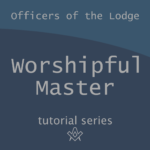 Officers of the Lodge - Worshipful Master Worshipful Master: the highest-ranking officer in the lodge, is the embodiment of wisdom and authority. The Worshipful Master guides the brethren on their spiritual path, representing the divine light that illuminates the Masonic quest for knowledge and self-discovery. |
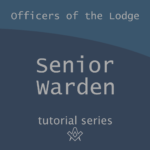 Officers of the Lodge - Senior Warden Senior Warden: embodies the essence of strength and stability within the lodge. As the pillar of support for the Worshipful Master, the Senior Warden symbolizes the fortitude required on our spiritual journey, inspiring us to persevere in the face of adversity |
 Officers of the Lodge - Junior Warden Junior Warden: Ensuring the well-being of the brethren during the lodge's hours of refreshment. Representing the virtue of temperance, the Junior Warden reminds us to find balance in our lives and cultivate moral discipline in our pursuit of truth. |
 Officers of the Lodge - Deacons Deacons: The messengers and intermediaries within the lodge. Representing the communication between the material and the spiritual realms, Deacons symbolize the importance of transmitting knowledge and wisdom as we strive for personal growth and enlightenment on our Masonic journey. |
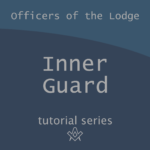 Officers of the Lodge - Inner Guard Inner Guard: Is the first line of defence against unworthy intruders, the Inner Guard represents our inner conscience and the personal responsibility we have to safeguard the integrity of our spiritual journey. |
 Tyler: The significance as the protector of the lodge's secrets and harmony. Tasked with guarding the entrance, the Tyler symbolizes our spiritual and moral boundaries, ensuring only worthy candidates are allowed into the sacred space of Freemasonry's teachings and rituals. |
masonic knowledge
to be a better citizen of the world
share the square with two brothers

click image to open email app on mobile device


